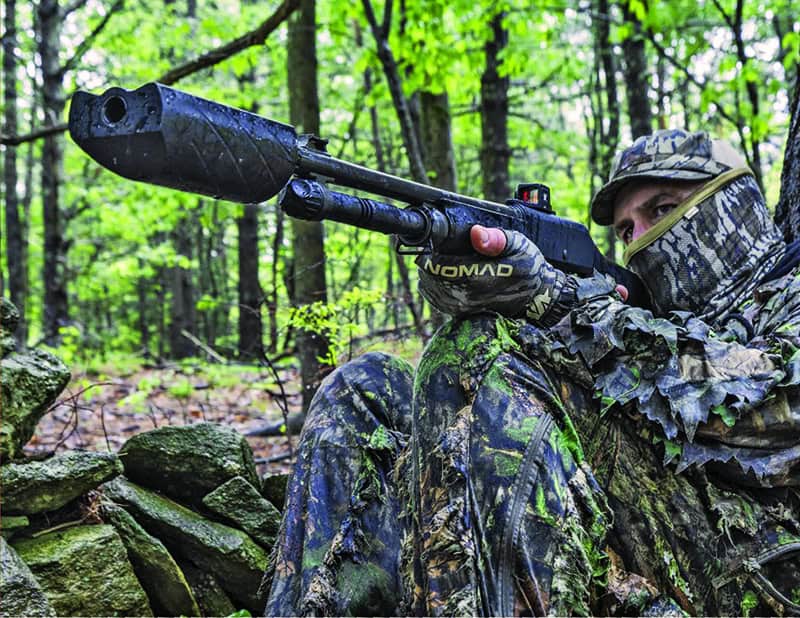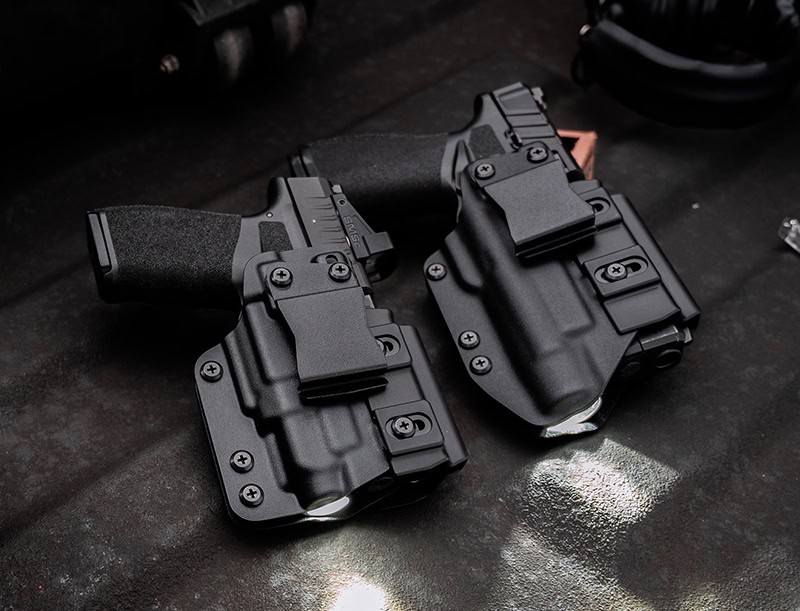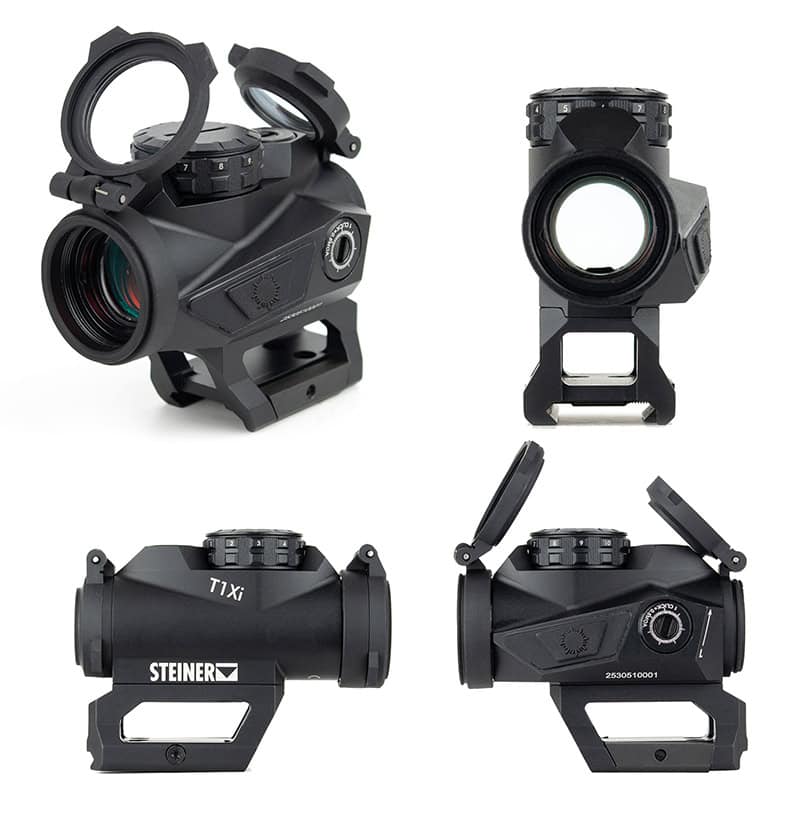Navigating A New NFA Landscape
While there was significant momentum for the Hearing Protection Act (H.R.404/S.364) to be passed as part of the One Big Beautiful Bill Act (OBBB)— which would have removed suppressors from the purview of the National Firearms Act (NFA) — it wasn’t meant to be. However, firearms owners and prospective suppressor/SBR/SBS buyers can take solace in the fact the $200 tax stamp fee on suppressors, short-barrel rifles (SBR) and short-barrel shotguns (SBS) will be no more starting Jan. 1, 2026.
This removal of this tax, which had been in effect for over 90 years, represents a watershed moment — and will certainly impact the sales of suppressors and SBRs/SBSs for the rest of this year and 2026, onward.
To organizations like the American Suppressor Association (ASA), it’s a step in the right direction, but leaves room for more work to be done.
“While we fought hard on behalf of millions of Americans for full removal of suppressors and other items from the NFA tax scheme, this outcome is a critical step in our plan to dismantle the NFA once and for all. We will not stop fighting until that goal is achieved,” said Knox Williams, ASA president and executive director in a statement disseminated when the bill was sent to President Trump’s desk July 3.
Williams shared his organization — along with the NRA, Firearms Policy Coalition and Second Amendment Foundation — is actively exploring “every available option” to challenge the constitutionality of the NFA in federal court.
Ready To “Make Noise” Now Or In January?
The segment making the most noise (pun intended) through the first half of 2025 has been suppressors without question — especially when compared to the overall contracted market.
As such, suppressors will be an “interesting” segment to observe because consumers are now faced with two options: 1) They can decide to buy now (and perhaps take advantage of a promotion covering the cost of the tax stamp) while supply is steady, or 2) They can wait to fill out their Form 4 after Jan. 1, 2026, save $200 but likely be part of an avalanche of Form 4s coming in for processing.
Will ATF be able to handle such volume? Some consumers may not want to find out and buy now. Others may roll the dice and wait.
To get a better idea of what to expect for the rest of this year (and beyond), we sat down with Brandon Maddox of Silencer Central and BANISH Suppressors, who offered his insights and predictions of the changing suppressor landscape.
Infighting Doesn’t Help
Before delving into the interview, I want to address the “elephant in the room.” In mid-May, some industry influencers labeled Silencer Central a “traitor” for what they perceived to be Silencer Central’s efforts behind the scenes to halt the passage of the Hearing Protection Act (HPA) — which, if passed, would have negatively impacted Silencer Central’s business model in 42 states where suppressors are legal — and were, therefore, anti-gun.
Such is our industry’s desire to turn on each other at times: Silencer Central faced visceral anger from the public and was even mocked by other companies — but it was short-lived.
“It was one day, really, we had a lot of feedback from people calling in. With the people who called in, we only received one call from a customer. It was a lot of feedback from people who maybe didn’t know we existed before,” Maddox said. “There were a lot of comments online, but it seemed like most people didn’t really research it a whole lot. They heard one thing and went running looking for someone to blame.”
Maddox confirmed his company, indeed, supports the Second Amendment and was in favor of the Hearing Protection Act (HPA). Like any successful business, Maddox shared Silencer Central was ready to “pivot” if HPA became law. BANISH Suppressors, a brand created and sold by Silencer Central, would stand to benefit immensely if HPA passed (which makes the criticism even more outlandish).
A final word on Maddox’s commitment to our industry: He was appointed to the NSSF Board of Governors July 7, which includes an extensive vetting process and interviews by existing members of the board. So, he’s very keen on defending the Second Amendment and seeing businesses of all kinds in our industry flourish — especially dealers.
How Much Of An Increase?
In the short-term, Maddox predicts the suppressor market will face some uncertainty because patient consumers will save $200 if they can hold off on their suppressor purchase until after this year.
“The only negative I’ve seen [with OBBB signed into law] is the large gap until the tax stamp is removed,” he observed. “Consumers are going to be less likely to buy. I wish the people who crafted it would have made it instant or even a delay of 30 days — that would have been best for the consumers and dealers.”
Due to the nature of his business, Maddox has numerous contacts at the ATF’s NFA branch, and they told him they’re equipped to handle what will be a significant jump in suppressor-buying volume at the start of next year.
“It’s hard to say what the volume across the market will be. I know for us, when we have run ‘Tax Stamps are On Us’ sales our volume typically jumps 300%. So, the market could see that much of an increase, at least initially,” he said.
In preparation for the possibility of HPA passing, Maddox shared BANISH elevated the scale of its production — so they’re well equipped for a demand surge when it likely happens next year. Additionally, BANISH has established a dealer network, which it didn’t have until prior to this year.
“We’re anticipating this fall there will be additional interest from dealers who are preparing to get ready once the tax stamp is removed in January,” he said. “From a BANISH perspective, we’re in a good spot because we have inventory ready and dealers weren’t able to carry it until the beginning of this year — so it’s something new for customers.”
Market Drivers
When asked why suppressors have enjoyed such a market “boom,” Maddox shared it’s a collection of factors.
“The quick turnaround from submitting paperwork to being approved is one significant reason, but also inflation played a role. $200 today isn’t nearly as expensive as $200 in the 1930s,” he said. (Just for my own education, I researched $200 in 1934 is equivalent in purchasing power to $4797.99 today — so yes, a big difference!)
Maddox also highlighted education through personal experiences (a hunter who tells his hunting buddy he’ll never hunt without a suppressor again is a powerful testimony) and repeat buyers (those who will buy a rimfire suppressor, .30-cal. and 9mm to run the gamut on their firearms) have driven the market forward.
Innovation is important to drive any segment. To this end, BANISH just released the first shotgun suppressor made for hunters — the BANISH 12. Its lightweight (constructed entirely of titanium) and comes standard with Improved Cylinder, Modified and Full chokes. Maddox noted it received a great reception from dealers at the Sports South Dealer Show held June 16–18.
Attracting Buyers
As suppressor manufacturers, wholesalers and SOT FFL dealers prepare for the coming rush once the tax stamp is removed, Maddox shared some tangible tips for dealers to enhance their market share in this profitable category.
“I will tell you, your staff’s confidence in doing the paperwork is a direct correlation of how many suppressors you will sell. What hurts a lot of dealers is saying things like, ‘well, sometimes I do the paperwork’ or ‘I don’t know if we’re doing it right.’ Even you’re nervous about it, you can’t let the customer hear it. Because if you do, they’re not going to have confidence in you doing the paperwork,” he advised.
Maddox recommended taking advantage of resources like NSSF webinars to learn more about selling suppressors and other NFA items, and to have a dedicated member of your team study it and really understand it.
“We had customers come up to us at the recent Sports South Dealer Show who told us if it weren’t for Silencer Central last summer, they weren’t sure if they’d still be open. With the margins and interest, they were able to stay afloat,” Maddox relayed.
He continued, “Dealers just need to be engaged in the discussion and ask new customers, ‘Have you considered a suppressor?’ Use the excuse it’s the fastest-growing accessory in the industry and you think they’d want to know more about it.”
Maddox shared who to target for becoming a first-time suppressor owner.
“Suppressors aren’t cheap. The first market to go after is your professionals or empty nesters who have more disposable income,” he stated. “High-volume buyers — those who enjoy shooting and buy lots of ammunition — are also going to be on board with having a suppressor.”
It’s a bit of a murky NFA landscape, but there is potential for it to be a real profit center for dealers ready to capitalize on what will be a significant rush in buying at the start of the 2026 New Business Year.
As always, we want to hear from you: What are your expectations for suppressors/SBRs/SBSs through the rest of 2025 and the start of 2026? Let us know: editor@shootingindustry.com.




